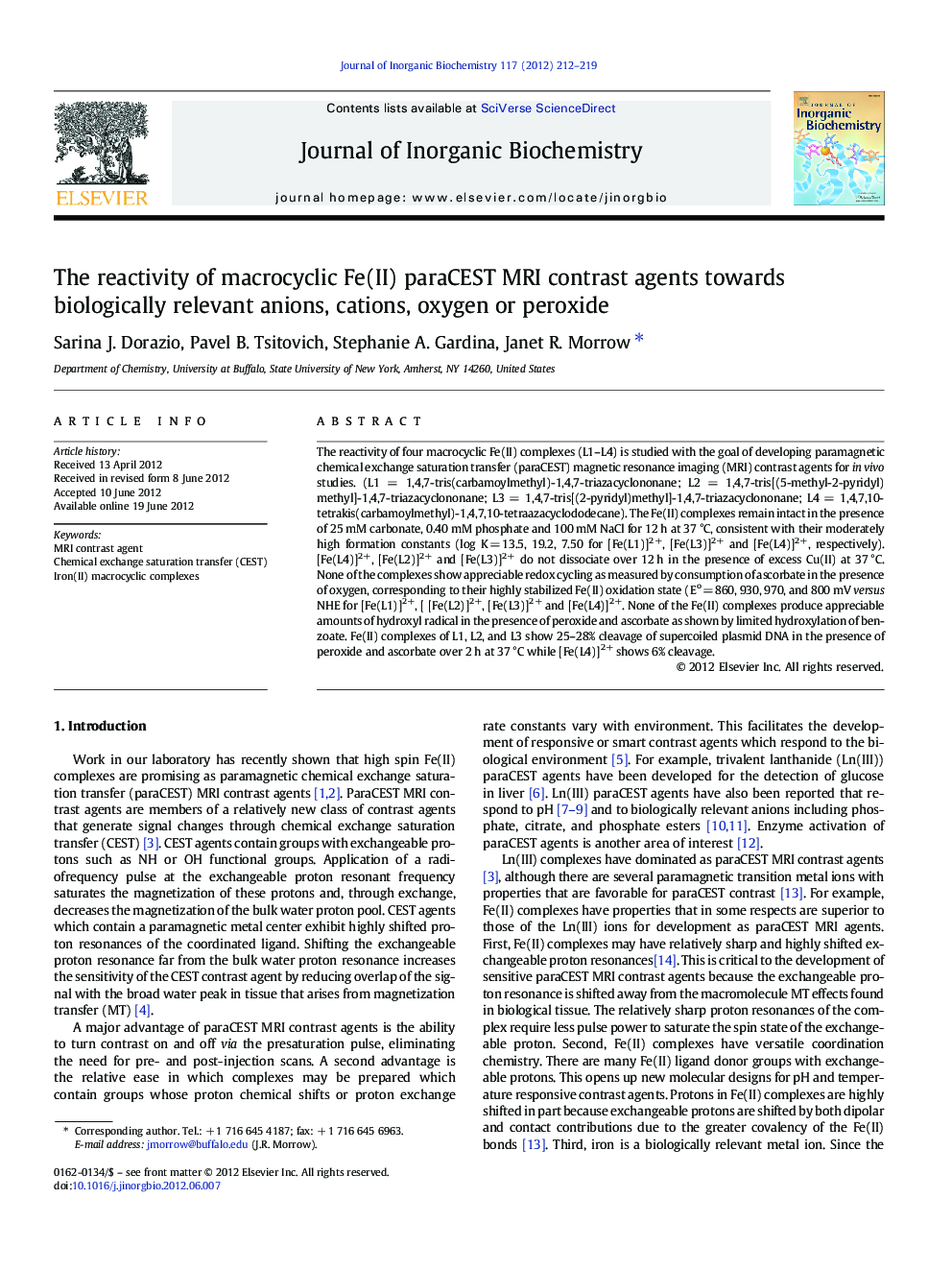| کد مقاله | کد نشریه | سال انتشار | مقاله انگلیسی | نسخه تمام متن |
|---|---|---|---|---|
| 1317722 | 1499470 | 2012 | 8 صفحه PDF | دانلود رایگان |

The reactivity of four macrocyclic Fe(II) complexes (L1–L4) is studied with the goal of developing paramagnetic chemical exchange saturation transfer (paraCEST) magnetic resonance imaging (MRI) contrast agents for in vivo studies. (L1 = 1,4,7-tris(carbamoylmethyl)-1,4,7-triazacyclononane; L2 = 1,4,7-tris[(5-methyl-2-pyridyl)methyl]-1,4,7-triazacyclononane; L3 = 1,4,7-tris[(2-pyridyl)methyl]-1,4,7-triazacyclononane; L4 = 1,4,7,10-tetrakis(carbamoylmethyl)-1,4,7,10-tetraazacyclododecane). The Fe(II) complexes remain intact in the presence of 25 mM carbonate, 0.40 mM phosphate and 100 mM NaCl for 12 h at 37 °C, consistent with their moderately high formation constants (log K = 13.5, 19.2, 7.50 for [Fe(L1)]2+, [Fe(L3)]2+ and [Fe(L4)]2+, respectively). [Fe(L4)]2+, [Fe(L2)]2+ and [Fe(L3)]2+ do not dissociate over 12 h in the presence of excess Cu(II) at 37 °C. None of the complexes show appreciable redox cycling as measured by consumption of ascorbate in the presence of oxygen, corresponding to their highly stabilized Fe(II) oxidation state (Eo = 860, 930, 970, and 800 mV versus NHE for [Fe(L1)]2+, [ [Fe(L2)]2+, [Fe(L3)]2+ and [Fe(L4)]2+. None of the Fe(II) complexes produce appreciable amounts of hydroxyl radical in the presence of peroxide and ascorbate as shown by limited hydroxylation of benzoate. Fe(II) complexes of L1, L2, and L3 show 25–28% cleavage of supercoiled plasmid DNA in the presence of peroxide and ascorbate over 2 h at 37 °C while [Fe(L4)]2+ shows 6% cleavage.
Fe(II) paraCEST MRI contrast agents and related complexes are inert towards biologically relevant cations and anions at 37 °C, neutral pH and do not undergo appreciable redox cycling or produce reactive oxygen species in the presence of ascorbate and peroxide or air, corresponding to their stabilized and protected Fe(II) center.Figure optionsDownload as PowerPoint slideHighlights
► Fe(II) complexes are stabilized in the divalent state by neutral macrocyclic ligands.
► Macrocyclic ligands that encapsulate the Fe(II) center prevent dissociation.
► Fe(II) macrocyclic complexes do not interact strongly with anions in solution.
► The lack of appreciable ROS generation correlates to high Fe(III)/Fe(II) reduction potentials.
Journal: Journal of Inorganic Biochemistry - Volume 117, December 2012, Pages 212–219